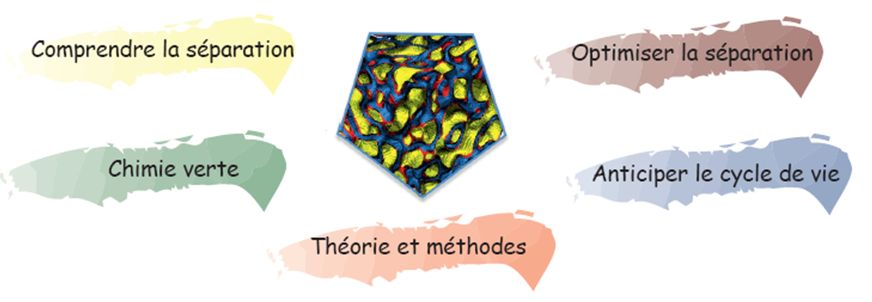
The ICSM is a Joint Research Unit (UMR 5257) between the French Atomic Energy and Alternative Energies Commission (CEA), the French National Center for Scientific Research (CNRS), the University of Montpellier (UM) and the Montpellier National School of Chemistry (ENSCM). Created in January 2007, the ICSM is composed of 3 research axes gathering 8 research teams working in close collaboration (see the 2019-2022 scientific report, pdf format).
It is also part of the Balard chemistry cluster, which brings together Montpellier's 4 chemistry institutes, including the Institut Européen des Membranes (IEM), the Institut Charles Gerhardt de Montpellier (ICGM), and the Institut des biomolécules Max Mousseron (IBMM).
Credit: University of Montpellier
The unavoidable scarcity of fossil fuels, the increasingly unacceptable impact on the climate and the environment of energy production from these fuels, new requirements for the safety of installations and the management of their waste, and the need for increased production of fresh water in many regions are confronting scientists with a strong demand from society for practical and reliable solutions in energy technology. Before the expected availability of fusion energy and in line with the necessary intensification of the use of renewable energies (written into the law of July 13, 2005), a sustainable nuclear energy system using the isotope 238 of uranium will not be based on simple extrapolations of what already exists and will rely on advances in separative chemistry.

n the field of alternative energies, making them sustainable in the same way means effectively closing the cycle of fluids and materials used in other decarbonized energy technologies. In a world of finite natural resources, closing the cycles is a selective sorting process, which is at the level of the chemist an ionic, molecular or colloidal separation.
Recycling rare earths instead of extracting them from the ground is a first important challenge for this chemistry, which comes under the heading of nanoscience via the colloidal aspects that are at the heart of many processes.
In the same field: